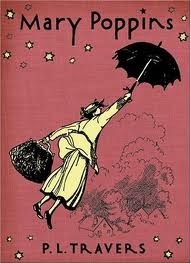 Browne, Anthony. (2004). Into the Forest. Cambridge, Massachusetts: Candlewick Press.
Browne, Anthony. (2004). Into the Forest. Cambridge, Massachusetts: Candlewick Press.A young boy goes off, into the forest, to deliver a cake to his grandmother who lives there. Along the way, he meets lost souls in the forest and eventually becomes lost himself. But as he wanders, he finally finds his grandmother's cottage.
Connecting to the Standards
Grade 2 RL (7): Use information gained from the illustrations and words in a print or digital text to demonstrate understanding of its characters, setting, or plot.
- The illustrations in the story are very detailed when it comes to explaining characters and setting of the story.
Grade 2 RL (9): Compare and contrast two or more versions of the same story (e.g., Cinderella stories) by different authors or from different cultures.
- This story includes stories such as Goldilocks and the Three Bears, Jack and the Beanstalk, and elements of Little Red Riding Hood.
Grade 2 SL (1): Participate in collaborative conversations with diverse partners about grade 2 topics and texts with peers and adults in small and larger groups.
- Students will discuss the illustrations in groups.
Adapted to the Classroom
Students will most likely already be familiar with the stories present within this book, so establishing prior knowledge will probably not be necessary. I would possibly pair this lesson with the other fairy-tale lessons presented in this blog such as Lon Po Po and The Three Pigs.
The teacher will read the story aloud, possibly having the illustrations projected for students to see up close. Students should recognize some of the elements of other stories they see, either in the text or in the illustrations. The teacher might ask if they recognize the different characters and what stories they're from.
Once the reading is over, students will break up into small groups, each group getting a copy of the book. Students will be prompted to study the illustrations in conjunction with the text. Have students write down what fairy tales they see present in the story. Prompt them to look very closely at the illustrations, as some of the fairy tales are not as obvious as others. Students will share their findings with the class.
Bloom's Taxonomy
Distinguish what fairy tales are present in this story. (Analysis)
What story does the main character present? (Analysis)
Differentiation
Students who have trouble in small groups may need support, either by putting them with other students they work well with or by having the teacher standing by ready to give support to the student and redirect their behavior.























